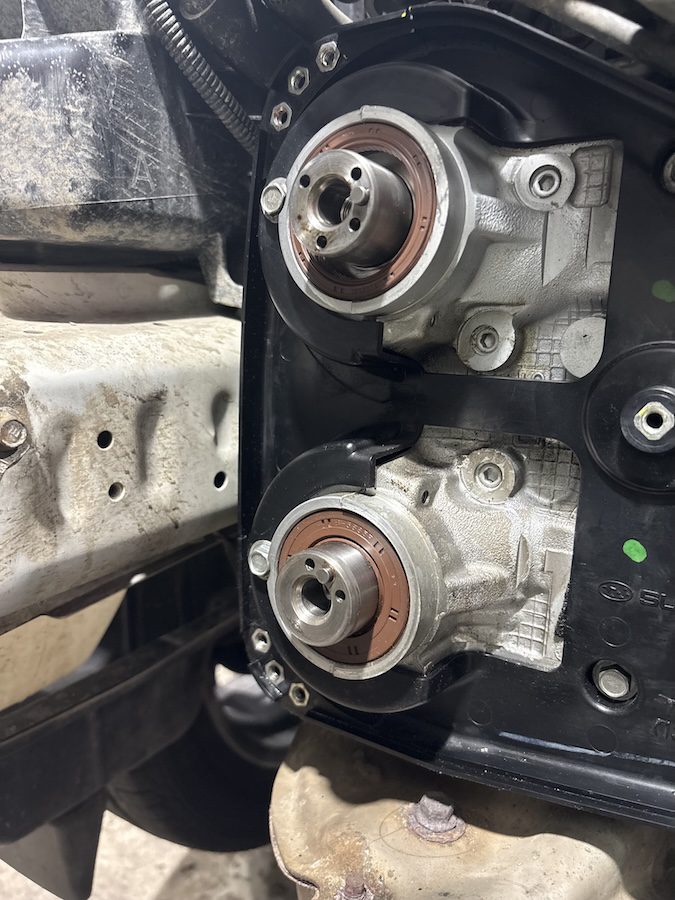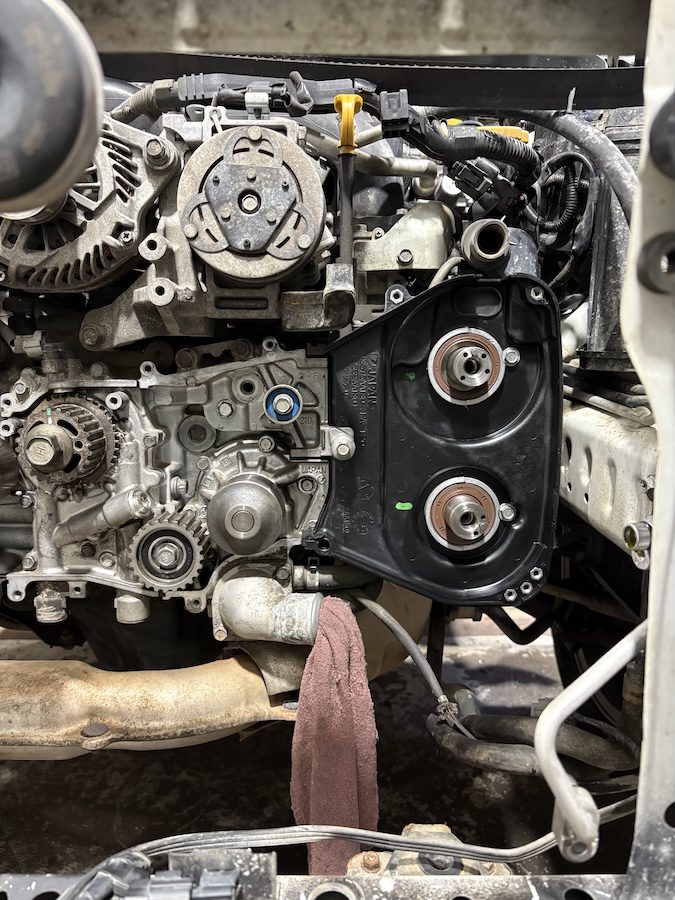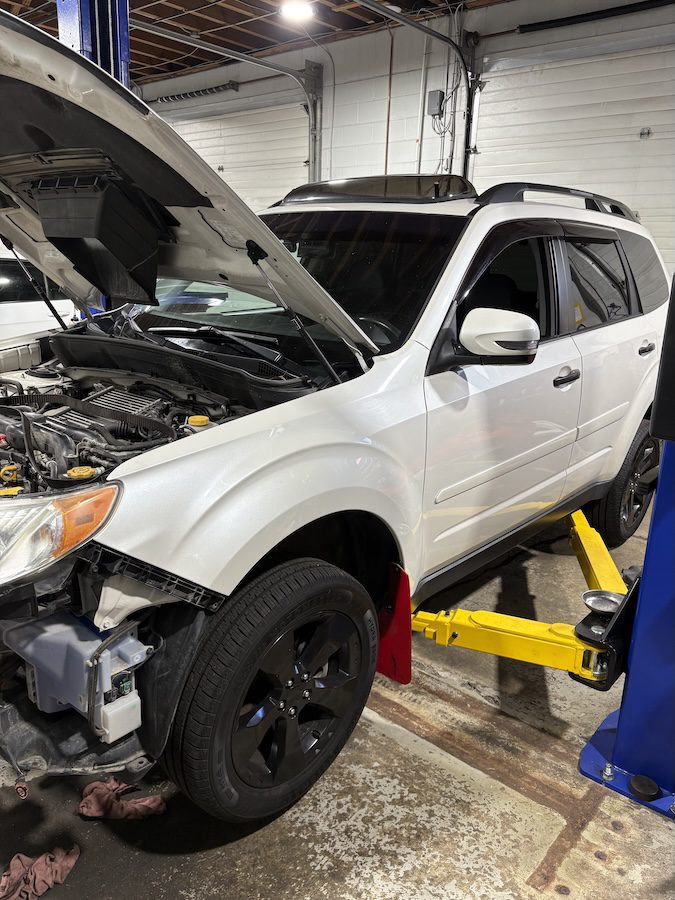This week at The Garage, we had a 2013 Subaru Forester XT (Turbo) in for its routine timing belt replacement — and ended up catching something a lot more critical: a failing VVT oil control system.
It’s not uncommon, especially with Subaru engines built after 2008. And it’s one of those things that, if caught early, can save you thousands.
What Happened
The customer came in right on time for their scheduled timing belt service — which, on turbo Subarus, is essential. But during inspection, we found fault codes related to the intake camshaft timing, pointing us toward deeper issues in the Variable Valve Timing (VVT) system.
After digging in, it became clear: the oil control valve and camshaft gear weren’t getting proper oil flow. The cause? Carbon and sludge buildup inside the oil control passages.



What Causes This (And Why It’s So Common)
We’re seeing this more and more on late-model Subarus, especially in cars that have followed the “extended” oil change intervals — like 8,000 to 10,000 km between oil services.
While that might be what some manufacturers recommend, here’s the reality:
Modern engines, especially turbocharged ones, run hotter and tighter. That means:
- Oil breaks down faster
- Deposits form more quickly
- Small oil passages clog up before you know it
Once that happens, components like the intake cam VVT gear can’t function properly, causing:
- Engine timing faults
- Poor performance and fuel economy
- Rough idling and misfires
- Risk of long-term engine wear or failure
What We Did
This wasn’t just a quick fix. Our Subaru-certified techs got to work:
- Completed the timing belt replacement with water pump and tensioner
- Diagnosed and cleaned the oil control valve system
- Replaced the VVT cam gear that was failing
- Flushed and refilled with high-quality synthetic oil
- Cleared codes and ran full system checks
The result? The engine is now running smooth, with restored performance and proper valve timing. This Forester is ready for another 10+ years of reliable driving — no new car needed.
Why It Matters
This kind of repair is a perfect example of why preventative maintenance matters. Timing belts are scheduled. But the VVT issue? That was caught because we know what to look for.
If left alone, this would’ve eventually led to serious engine wear, degraded performance, and possibly catastrophic failure of the camshaft system — a repair that could cost thousands more.
By catching it early, we saved this customer from that outcome — and gave them peace of mind.
How to Protect Your Subaru (or Any Modern Engine)
- Don’t stretch your oil changes. Stick to 5,000–6,000 km intervals, especially on turbo engines.
- Use high-quality synthetic oil that meets manufacturer spec.
- Schedule timing belt replacements on time — not after the belt snaps.
- If your Subaru is throwing VVT codes or running rough, book a diagnostic immediately.
Own a Subaru?
If your vehicle is due for timing belt service — or you’ve got VVT-related fault codes showing up — book in with us at The Garage in Burnaby. We know these engines inside and out, and we’ll give you the honest advice you need.
Schedule a service, with Burnaby’s Trusted Auto Repair Shop for Subaru Repair
